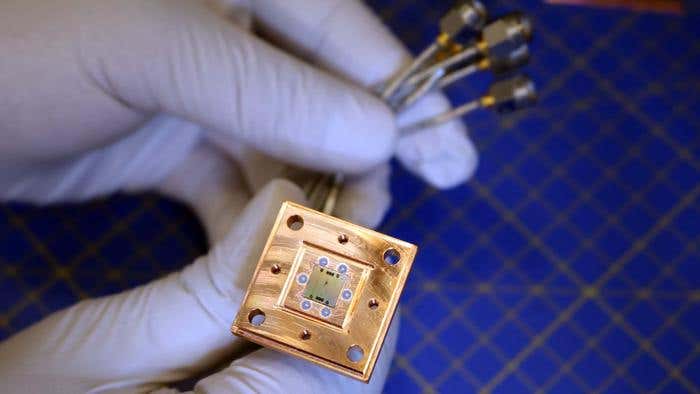Air pollution increases your risk of Parkinson’s disease by 56%, study finds
Parkinson’s disease (PD) affects about 2% of people aged 70 and older. Over the next 20 years, the number of individuals with PD is expected to triple.

Parkinson’s disease (PD) affects about 2% of people aged 70 and older. (CREDIT: CC BY-SA 3.0)
Parkinson's disease (PD) affects about 2% of people aged 70 and older. Over the next 20 years, the number of individuals with PD is expected to triple. There are various theories explaining this increase, focusing on interactions between environmental factors, genetic predispositions, and other known risk factors.
One environmental exposure that may play a role in PD risk is air pollution, particularly aerosolized particulate matter with a diameter of 2.5 microns or less (PM2.5). Research suggests that the ultrafine particles (≤0.1 µm) within PM2.5 could cross the blood-brain barrier, potentially leading to inflammation, oxidative stress, and activation of microglia, which are all mechanisms believed to contribute to the development of PD.
Although there are no national datasets tracking ultrafine particles in traffic pollution, these particles, along with nitrogen dioxide (NO2), are recognized as traffic-related pollutants. Nationwide data on NO2 are available, and past studies have linked NO2 exposure to an increased risk of PD. Understanding the association between PM2.5, NO2, and PD could provide further insights into how air pollution influences the risk of developing PD.
Beyond increasing the risk of PD, air pollution may also influence how PD presents itself in individuals and how effective treatments are. This hypothesis remains under investigation, with ongoing research aimed at clarifying the role air pollution plays in both the onset and progression of Parkinson's disease.
A recent study by Barrow Neurological Institute has revealed a startling connection between air pollution and Parkinson's disease. People living in areas with median levels of air pollution face a 56% higher risk of developing the disease compared to those in areas with the lowest pollution levels.
Related Stories
This study, published in Neurology—the journal of the American Academy of Neurology—was conducted to identify geographic patterns of Parkinson’s disease across the United States and explore its association with fine particulate matter (PM2.5).
Dr. Brittany Krzyzanowski, a postdoctoral research fellow at Barrow Neurological Institute and the lead researcher of the study, explains the significance of the findings. “Previous studies have shown fine particulate matter to cause inflammation in the brain, a known mechanism by which Parkinson’s disease could develop.”
Krzyzanowski and her team employed advanced geospatial analytical techniques to confirm, for the first time, a strong nationwide correlation between Parkinson's disease and fine particulate matter.
The relationship between air pollution and Parkinson’s disease varies across the country. While some regions show a stronger link, others appear to have a lower risk. The Mississippi-Ohio River Valley emerged as a significant hotspot for Parkinson’s, alongside areas like central North Dakota, parts of Texas, Kansas, eastern Michigan, and the southern tip of Florida. Interestingly, the western half of the United States shows a reduced risk of the disease in comparison to the rest of the nation.
Krzyzanowski suggests these regional differences could stem from variations in the composition of particulate matter. “Regional differences in Parkinson’s disease might reflect regional differences in the composition of the particulate matter. Some areas may have particulate matter containing more toxic components compared to other areas,” she says.
While the study did not delve into the specific sources of pollution, Krzyzanowski points out that the Mississippi-Ohio River Valley, a region with a high concentration of Parkinson’s cases, has a dense road network and significant industrial activity. Pollution from these areas may contain combustion particles from traffic and heavy metals from manufacturing, both of which have been linked to cell death in brain regions affected by Parkinson's disease.
The study analyzed nearly 90,000 Parkinson’s patients from a massive Medicare dataset of 22 million people. Using geocoded data, researchers mapped the residential locations of those with the disease, allowing them to calculate regional rates of Parkinson's.
They then measured the average annual concentrations of fine particulate matter in those regions and adjusted for various factors like age, sex, race, smoking history, and medical care access. This adjustment helped confirm the association between previous exposure to fine particulate matter and the risk of developing Parkinson's later in life.
According to Krzyzanowski, “Population-based geographic studies like this have the potential to reveal important insight into the role of environmental toxins in the development and progression of Parkinson’s, and these same methods can be applied to explore other neurological health outcomes as well.”
The findings of this study have significant implications for public health. While researchers have long explored environmental risk factors for Parkinson’s, much of the focus has been on pesticides. Krzyzanowski emphasizes that air pollution should now be regarded as a potential contributor. “This study suggests that we should also be looking at air pollution as a contributor in the development of Parkinson’s disease.”
With the growing evidence linking air pollution to neurodegenerative diseases, researchers hope their data will support policies that aim to reduce pollution levels. Lowering fine particulate matter concentrations could not only decrease the risk of Parkinson’s disease but also improve overall public health by reducing exposure to other diseases associated with air pollution.
The study's results underscore the importance of understanding how environmental toxins, like fine particulate matter, affect the brain and contribute to diseases like Parkinson’s. As researchers continue to explore this connection, the goal is to bring about stricter environmental regulations and mitigate the risk for vulnerable populations.
Note: Materials provided above by The Brighter Side of News. Content may be edited for style and length.
Like these kind of feel good stories? Get The Brighter Side of News' newsletter.
Joshua Shavit
Science & Technology Writer | AI and Robotics Reporter
Joshua Shavit is a Los Angeles-based science and technology writer with a passion for exploring the breakthroughs shaping the future. As a contributor to The Brighter Side of News, he focuses on positive and transformative advancements in AI, technology, physics, engineering, robotics and space science. Joshua is currently working towards a Bachelor of Science in Business Administration at the University of California, Berkeley. He combines his academic background with a talent for storytelling, making complex scientific discoveries engaging and accessible. His work highlights the innovators behind the ideas, bringing readers closer to the people driving progress.



